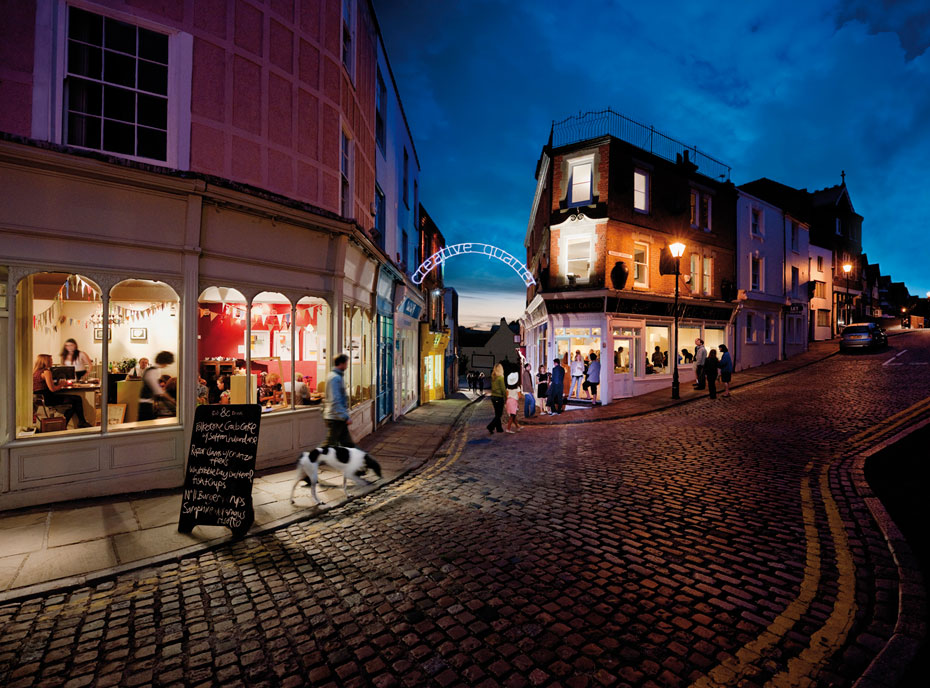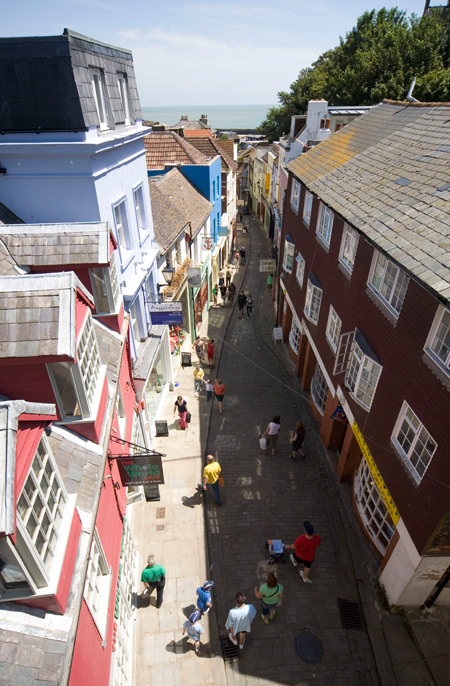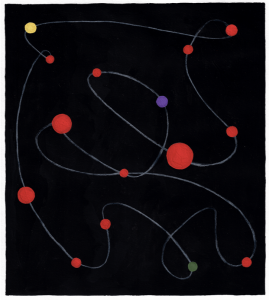In the first of a series of reports, Alex Moore heads to Kent to find out about how an economically stagnant costal town as been rebranded as a creative power-house for the arts

100 years ago Folkestone was one of the most fashionable and prosperous coastal resorts in the country: The Metropole had just been constructed, and Edward VII became a frequent visitor whilst dandies flocked down from London and the North for a slightly more ‘European’ climate.
Then two World Wars happened, unsurprisingly taking their toll on the town (during the Blitz, left-over bombs were dropped on Folkestone by Luftwaffe returning home) and consequent austerity meant a long weekend on the south coast wasn’t high on anyone’s agenda. During the 80s and 90s the construction of the Channel Tunnel provided employment, as well as bringing many people to the area, but on completion, jobs and people unceremoniously upped and left, and Folkestone was once again a semi-retired tumbleweed town on the not so European English coast.
But Folkestone is on the up, due in no small part to its wealthy benefactor, Sir Roger De Haan, former Chairman of Saga Group, who’s doing his best to rejuvenate the town. How? By reinventing it as a centre for creativity.

“So many people that can’t see the value of regenerating run down seaside areas but they have a character and charm that needs to be redefined for the 21st century”
So far, The Roger De Haan Charitable Trust has spent £100 million of the proceeds from Saga’s sale on a wide range of charitable causes and activities, mainly concentrated in the area around Folkestone, Hythe and the Romney Marsh in Kent.
One of the largest projects, hugely important in attracting creatives to the area, is the Folkestone Triennial – a major exhibition of contemporary public art that takes place in Folkestone. It represents the flagship visual arts element of a major regeneration project, led by The Creative Foundation, that began in the Kent coast town in 2003, with major financial support from RDHCT. Artists are invited to use the town as their ‘canvas’, utilising public spaces to create striking new pieces that reflect issues affecting both the town and the wider world. Artists commissioned to take part in previous triennials include Cornelia Parker, Tracey Emin, Jeremy Deller, Martin Creed and Richard Wilson.
Curating the triennial this year is Lewis Biggs who held positions as Director of Liverpool Biennial and Director of Tate Liverpool at the time when Liverpool was the European Capital of Culture. A year ago, East Kent submitted a strong bid to become UK City of Culture in 2017 (despite not being a city).
“Shepway (Folkestone) has seen the biggest drop in unemployment, and biggest number of startup businesses in the UK”
The Creative Quarter is an area of Folkestone that has been developed by the Creative Foundation to regenerate the town through the arts, the creative industries and education. Now home to a thriving collection of artists’ studios and creative businesses, it offers aspiring artists, retailers and business people affordable opportunities to become a part of this lively and expanding community. In the last few years 42 shops, 46 flats and 76 studios have been renovated exclusively for the use by those in creative industries. Occupancy has gone up to 95 percent from 60 percent in 2012. These figures parallel those showing that Shepway (Folkestone) has seen the biggest drop in unemployment, and the biggest number of startup businesses in the UK.
Regeneration is often a term used in lieu of ‘gentrification’, pricing locals out of the market. But because the campaign is charity funded, rents are kept low to combat gentrification and regenerate from the ground up. Rick Davis, of Davis Davis Design, has been quick to capitalise on the scheme: “There are so many people that can’t see the value of regenerating run down seaside areas but they have a character and charm that needs to be redefined for the 21st century. The fact that the Creative Quarter has stuck to the task in the face of opposition and apathy is brilliant. What I like now is seeing constant growth of the new outlets. There are lots of young business people – and not so young entrepreneurs – trying to make a go of it, it makes for a very exciting culture. It’s artsy, aspirational, and traditional all at the same time. It has a cool vibe.”

Kent County Council has also risen to the challenge. Their Expansion East Kent programme offers finance to businesses that want to grow and create jobs. It’s a £35m scheme funded by the government, and since it started in April 2012 it’s committed some £19m to businesses, creating 1,100 jobs. Others who’ve benefitted include a recording studio, a musical hall, several digital media firms and a furniture maker. The School for Creative Start-Ups in Folkestone has helped over 90 artists and designers turn aspirations into viable and successful businesses. Based on the successful London project started by Doug Richard in 2011, it’s the first of its type to be set up outside the capital.
A born and bred Folkestonite keen to put his status to good use is Mark Sargeant. Formerly head chef at Gordon Ramsay’s Michelin starred restaurant at Claridge’s in London, he’s hoping to “do for Folkestone what Rick Stein did for Padstow.” Sargeant has his fingers in lots of pies around Kent, from supporting local businesses through ‘Produced in Kent’ to opening one of the country’s most anticipated sea food restaurants, Rocksalt. He said, “In Folkestone we’re five seconds from the sea and 50 minutes from London, we have 44 acres of undeveloped harbour and seafront, not to mention beautiful seafront houses. It’s a fantastic spot for a tourist business.”
MP for Folkestone, Damien Collins insists, “This year is the tipping point for Folkestone” and the recent arrival of HS1 offering a 50 minute commute to London could well be the missing piece to the puzzle. Nathan Coley’s offering for the inaugural Triennial, an illuminated text sculpture that spells out the words, ‘Heaven is a place where nothing ever happens’ in large light bulbs above the town’s old post office may be a poignant observation of Folkestone’s not too distant past, but things are definitely happening these days.




